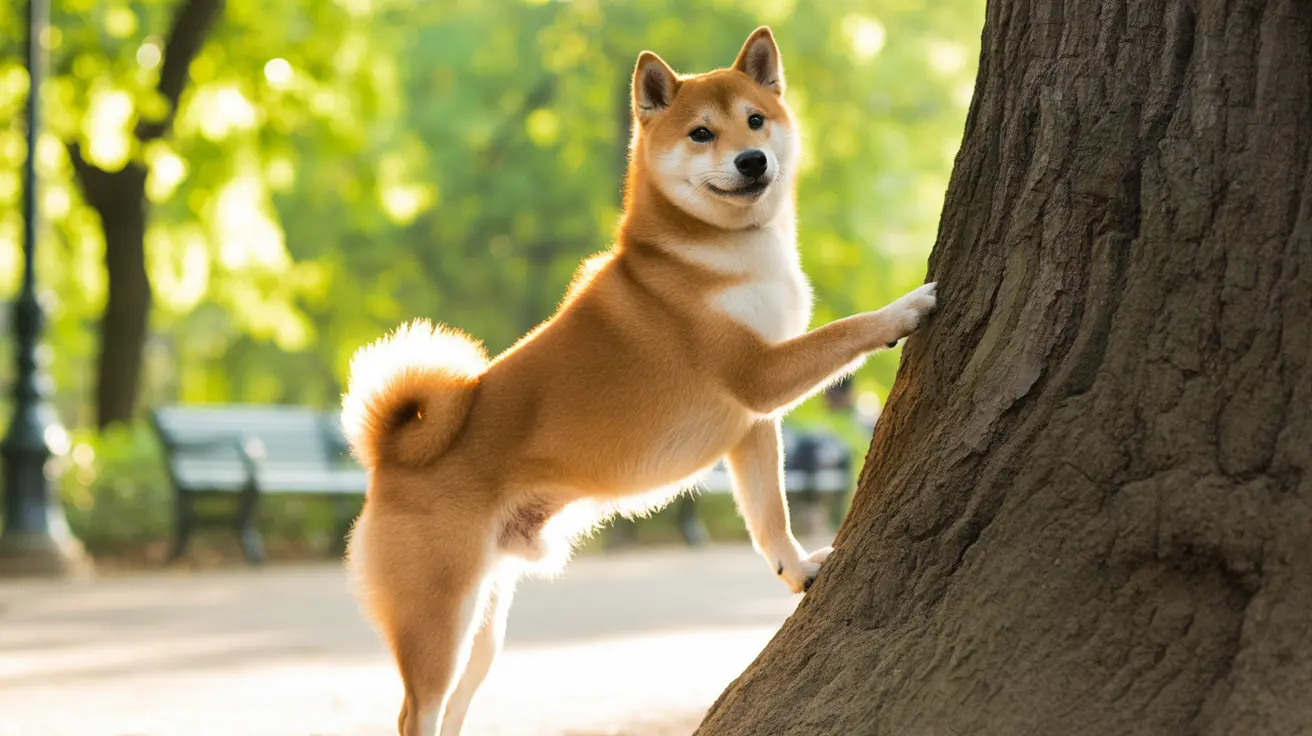If you've ever walked your dog, you've likely noticed their seemingly magnetic attraction to trees. This isn't just a random habit - there's actually a fascinating mix of biology, communication, and instinct behind why dogs pee on trees. Let's explore this common canine behavior and understand what it means for both our pets and their environment.
From an evolutionary standpoint, this behavior dates back to their wild ancestors and serves multiple important purposes in the dog world. Understanding these reasons can help us better manage our pets' habits while respecting their natural instincts.
The Science Behind Tree Marking Behavior
Dogs are drawn to trees primarily because these tall, vertical surfaces serve as perfect "bulletin boards" for their scent messages. When a dog urinates on a tree, they're not just relieving themselves - they're participating in a sophisticated form of communication that's been refined over thousands of years of evolution.
The raised leg posture, particularly common in male dogs, allows them to mark higher up on the tree trunk. This positioning helps their scent spread more effectively and makes them appear larger to other dogs who come across their mark.
Communication Through Scent Marking
When your dog pees on a tree, they're leaving behind much more than just urine. Their scent contains complex chemical messages that other dogs can read like a newspaper, sharing information about:
- Their gender and reproductive status
- Territory boundaries and claims
- Social rank within the local dog community
- Health status and recent activities
- Emotional state and stress levels
The Role of Pheromones
Dogs' urine contains specific pheromones that act as chemical signals to other canines. These molecular messages can last for days or even weeks, depending on environmental conditions, creating a long-lasting form of communication that far outlasts any verbal or visual signals.
Environmental Impact and Management
While this behavior is natural, frequent urination on trees can have negative consequences, especially in urban environments. The high concentration of nitrogen in dog urine can potentially damage tree bark and affect soil chemistry. This is particularly concerning for:
- Young or newly planted trees
- Trees in high-traffic dog walking areas
- Sensitive species of trees
- Urban parks and green spaces
Protecting Trees and Managing Marking
To minimize environmental impact while respecting your dog's natural instincts, consider these strategies:
- Train your dog to use designated bathroom areas
- Encourage marking in less sensitive locations
- Use positive reinforcement to redirect marking behavior
- Consider installing protective barriers around vulnerable trees
- Maintain consistent walking routes to manage marking locations
Frequently Asked Questions
Why do dogs prefer to pee on trees instead of other surfaces during walks?
Dogs prefer trees because they provide vertical surfaces that maximize scent dispersal. Trees are also naturally attractive as marking spots because they're prominent landmarks that other dogs frequently visit, making them ideal communication points.
How does peeing on trees help dogs communicate with other dogs?
When dogs urinate on trees, they leave behind pheromones and other chemical signals that communicate their presence, reproductive status, and territorial claims. Other dogs can read these "messages" through their highly developed sense of smell.
Can frequent dog urination damage trees or plants, and how can I protect my yard?
Yes, frequent urination can damage trees due to high nitrogen content in dog urine. Protect your yard by encouraging dogs to urinate in designated areas, using protective barriers around sensitive plants, and maintaining good soil drainage.
What is overmarking, and why do dogs sometimes pee over other dogs' urine on trees?
Overmarking occurs when dogs urinate over another dog's scent mark. This behavior can indicate social status, territorial claims, or simply a response to existing scent marks. It's particularly common in areas frequented by multiple dogs.
How can I train my dog to stop peeing on trees or reduce the environmental impact?
Train your dog using positive reinforcement to use specific areas for elimination, establish consistent walking routes, and reward them for appropriate elimination behavior. Consider using designated pet relief areas when available.
Conclusion
While dogs peeing on trees is a deeply ingrained natural behavior, understanding its purpose helps us better manage our pets while protecting our environment. By respecting this instinctual need while implementing thoughtful management strategies, we can maintain a healthy balance between our dogs' natural behaviors and environmental preservation.






